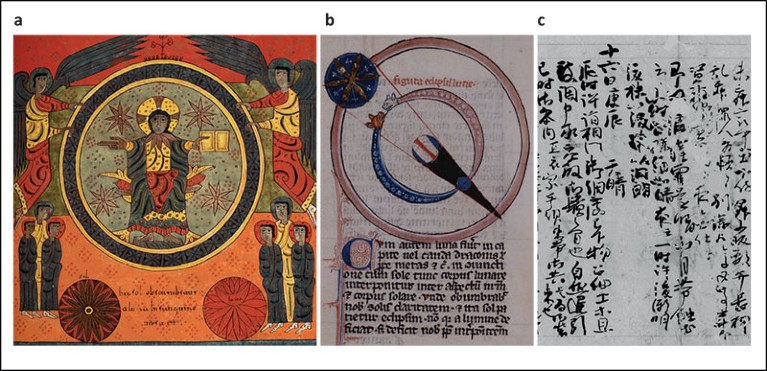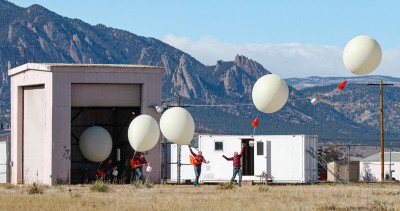
The great Japanese poet Fujiwara no Teika wrote in his diary of an unusually long and dark lunar eclipse in December 1229, observing that it was as if the Moon had entirely “disappeared”. Now climatologists have used Teika’s account and dozens of other lunar observations made by medieval scholars, clerics and monks to help pin down the timing and impact of volcanic eruptions from 1100 to 13001.
The research, published in Nature on 5 April, corroborates data extracted from ice cores and could help scientists to understand the run-up to the cold period known as the Little Ice Age, as well as the effects of a controversial technique proposed for manipulating the climate.
“If we really want to understand how past volcanic eruptions have impacted climate and societies, I think we need to combine historical archives, where they are available, with ice cores and tree rings,” says Sébastien Guillet, a palaeoclimatologist at the University of Geneva, Switzerland, and a co-author of the study. “None of these methods can work alone.”
Dark Moon rising
The authors identified nearly 400 accounts documenting a total of 119 lunar eclipses. Of those, 37 included information about Moon colouration and darkness; scientists can use both traits to determine whether and to what extent a volcanic haze was present at the time.
The team documented six dark lunar eclipses, which are indicative of massive eruptions that pushed volcanic aerosols high into the stratosphere, which starts roughly 10 kilometres above Earth’s surface. By combining those accounts with model simulations, modern satellite observations and tree-ring data, the team estimated that the eruptions took place 3 to 20 months before the observations were made. The team identified another five reddish eclipses indicative of eruptions that injected aerosols into the layer below the stratosphere; these aerosols would have had a relatively small impact on the climate.
Dust on ice
The new record aligns with earlier estimates based on dust layers found in ice cores from Antarctica and Greenland2,3. Seeing an independent record confirm the ice-core chronology “is very comforting”, says Elsa Gautier, a glaciologist at the University of Grenoble Alpes, France, who co-authored the analysis of the Antarctic cores.
The work could also further scientists’ understanding of the climate in 1100–1300, which could be key to understanding the development of the exceptionally cold period that followed, called the Little Ice Age.

US urged to invest in sun-dimming studies as climate warms
Knowing more about what happened in the past could also help to clarify the potential impacts of a controversial proposal known as solar geoengineering, in which particles would be injected into the stratosphere to reflect sunlight back into space. Some scientist argue that such efforts could serve as an emergency backstop to cool the planet and avert the worst effects of runaway global warming.
“Volcanic eruptions are our only — albeit imperfect — analogue for how the Earth’s climate might respond to future solar geoengineering,” says Kevin Anchukaitis, a palaeoclimatologist at the University of Arizona in Tucson. Understanding the precise timing of eruptions can help scientists to improve their models, he says, and “better models should lead to a better understanding of the benefits and risks of geoengineering”.
For Guillet, who spent a decade poring over historical records in his free time before finishing the project during pandemic lockdowns, the study is also a nod to the medieval observers whose accounts historians have long used to document social and political trends. “If they are able to provide such an accurate record about social and political events, why not about natural events?” he says.
Science - Latest - Google News
April 05, 2023 at 10:17PM
https://ift.tt/vRWgtFB
Medieval accounts of eclipses shine light on massive volcanic eruptions - Nature.com
Science - Latest - Google News
https://ift.tt/a1r9icK
https://ift.tt/XCBoL8x
Bagikan Berita Ini

















0 Response to "Medieval accounts of eclipses shine light on massive volcanic eruptions - Nature.com"
Post a Comment